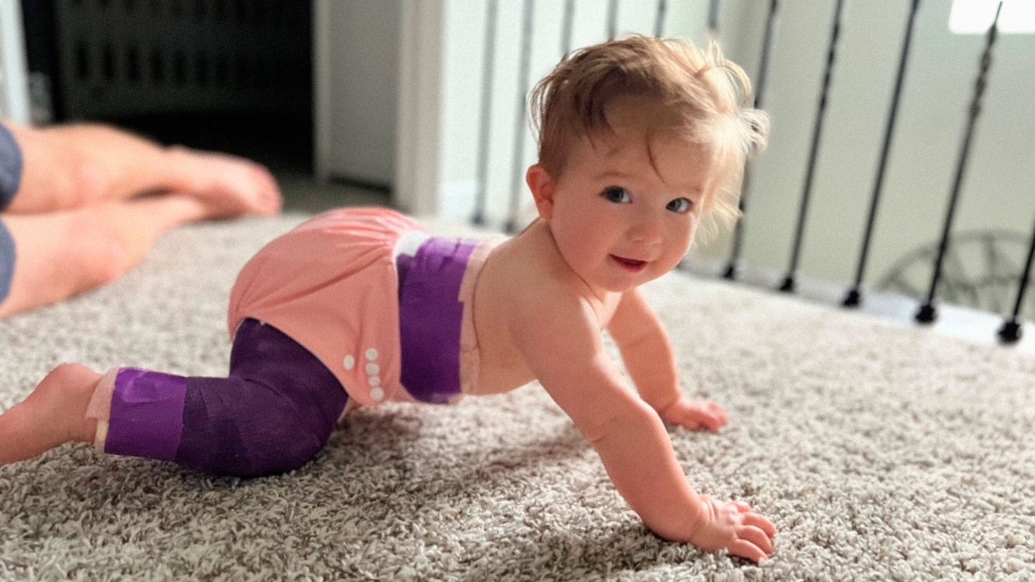The approach doesn't require intubation or general anesthesia for surgical procedures below the belly button
12:55 PM
Author |

When Brittany Downing was told her baby, Ryan, would need surgery to fix her hip, one of the first things she grappled with was the idea of her six-month old being put under anesthesia.
So, when she discovered that Ryan was eligible for spinal anesthesia, the decision was a no-brainer.
“I kind of understood what a spinal is like, having had one myself for my C-section,” said Downing.
The pediatric spinal anesthesia program, implemented by pediatric anesthesiologists at University of Michigan Health C.S. Mott Children's Hospital in Ann Arbor and subsequently introduced at University of Michigan Health-Sparrow in Lansing, offers a needle-based technique that provides sensory and motor block without the need for intubation or general anesthesia for pediatric surgical procedures below the belly button.
This means the patient will not feel anything below chest level.
Patients who undergo traditional general anesthesia usually need intubation, a process in which a tube is inserted through a person's mouth or nose, then down into their airway, so oxygen can be delivered to the lungs.
The tube connects to a machine that delivers these breaths mechanically.
For children under age one, the riskiest part of receiving a general anesthetic is management of their airways.
“I’m always looking for ways to make surgery safer and less scary for my patients,” said Ashlee Holman, M.D., anesthesiologist and the director of Pediatric Regional Anesthesia and Pain Medicine at Mott and associate professor of anesthesiology at Michigan Medicine.
“Spinal anesthesia takes the risk of airway management completely out of the picture.”
Children's vital signs stay remarkably stable throughout surgery with spinal anesthesia, notes Holman, and they aren’t exposed to general anesthesia medications or opioids.
“These kids are so little that you don’t know how they’re going to react to medications, on top of having to have an airway. The spinal is much less invasive,” said Downing.
Holman added, “We’ve seen babies have smoother operative and postoperative periods after spinal anesthesia, and they are often reunited quicker with their caregivers in the recovery room.”
Common surgeries or procedures performed under spinal anesthesia include hernia repairs, circumcisions and surgery on the lower belly, hips, legs, or feet.
The pediatric program was launched in 2018 and Mott is now the third hospital in the country to have performed more than 1,000 surgeries under spinal anesthesia on pediatric patients.
Additionally, the team has trained six classes of pediatric anesthesia fellows — about 50 fellows — several of whom have started their own pediatric spinal anesthesia programs at hospitals throughout the country.
Last year, the Michigan Medicine team received an innovation research grant from U-M’s Graduate Medical Education office to continue developing a simulation-based spinal anesthesia skills training program to support faculty, fellows and residents as they further improve their skills.
Said Holman, “I’m incredibly proud of the innovative work our pediatric anesthesia care teams, led by a group of dedicated anesthesiologists, are doing and our ability to provide safe, effective and comforting care for children and infants at University of Michigan.”
This story was co-authored by Ashlee Holman, M.D.
Sign up for Health Lab newsletters today. Get medical tips from top experts and learn about new scientific discoveries every week by subscribing to Health Lab’s two newsletters, Health & Wellness and Research & Innovation.
Sign up for the Health Lab Podcast: Add us on Spotify, Apple Podcasts or wherever you get you listen to your favorite shows.

Explore a variety of health care news & stories by visiting the Health Lab home page for more articles.

Department of Communication at Michigan Medicine

Clinical Associate Professor
Want top health & research news weekly? Sign up for Health Lab’s newsletters today!





